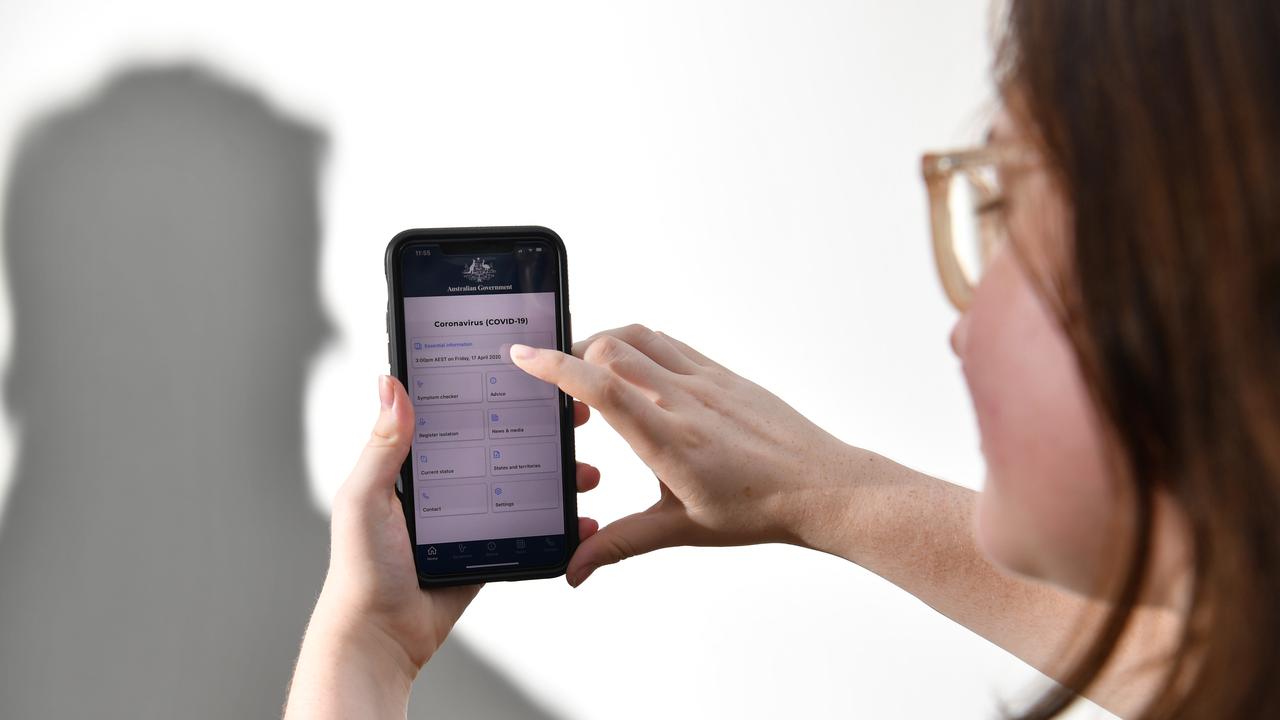Australia won’t get the best COVID-19 tracing app
Application developers and teachers advised News Corp there were better virus-tracing possibilities available than the model proposed by the Federal government and suggested it was “not much too late” to use additional productive technology or make alterations to shield users’ privateness.
The warnings arrived even while the Government’s forthcoming app received in-principle help from Cyber Security Cooperative Exploration Centre past week and Prime Minister Scott Morrison explained the app, which he named an “important tool” in finding Australians back again to operate adhering to the COVID-19 outbreak, would be launched “soon”.
The Australian app will be based mostly on TraceTogether code established and deployed in Singapore that utilizes Bluetooth info to document each and every the information of all buyers who make near contact for at the very least 15 minutes.
When a consumer is diagnosed with COVID-19, that encrypted info is passed on to condition well being authorities, alongside with the names, cellphone numbers, age ranges, and postcodes of people today they were around for the earlier 21 times.
But College of Melbourne computing and info techniques lecturer Dr Suelette Dreyfus warned the technology was not the best way to observe instances of COVID-19 when shielding users’ privateness.
She explained the Government’s app, as it experienced been explained, would shop own info in a one, centralised, database, placing it at higher safety hazard when there were better possibilities available.
Other coronavirus-tracing technology, including techniques proposed by a team of three hundred safety gurus, suggested storing facts in users’ smartphones and recording only the Bluetooth communications they experienced sent to other people.
“There’s no doubt that a person of the decentralised versions is better for privateness and however presents you coronavirus-tracking,” Dr Dreyfus explained.
“If Scott Morrison is so eager for 40 for every cent-as well as Australians to indication up to this app, why would you not choose the most privateness-enhancing solution that also tracked the spread of the virus? You want have confidence in if people today are heading to voluntarily download it.”
Optus Macquarie College Cyber Security Hub government director Dali Kaafar explained a centralised technique might be a lot quicker to construct but it would also depart Australians’ info “more vulnerable to a breach”.
But he explained a sequence of compact but vital alterations could however be produced to the Singaporean app to lower hazards and enhance consumer privateness.
Much more News
Will COVID-19 kill off the business vacation?
Why The us appears to be to Australia for hope
Mother and father switch to dwell tutors as teachers fail to present on the web
British isles lockdown: How constraints could be eased
An assessment of the technology confirmed informing buyers straight about probable coronavirus contact and requesting info, he explained, fairly than governing administration companies just taking it without detect, could increase have confidence in in the app.
“It’s not much too late to make these alterations,” Professor Kaafar explained.
“We want people today to have confidence in this app, opt in and acknowledge tracing so the app turns into widely adopted.”
Veteran app developer Quentin Zervaas explained the Australian Federal government would also be clever to contemplate using application beneath development by as their technology, available next month, would get all around Bluetooth constraints in cellphone application.
The Singaporean app to be applied in Australia now cannot operate on Apple iPhones, for example, unless of course it is actively open up and on the phone’s display.
Mr Zervaas explained the application would also use a personal, decentralised model and really should not be dismissed as an solution.
“(The Federal government) really should be in talks with Apple and Google. That really should have been their first port of phone. Why not discuss to the people today who make the phones?” he asked.
“They really should be in a home jointly indicating ‘let’s consider to nut this detail out’. It’s baffling to me.”
Mr Zervaas explained he was doing the job to make an open up-resource prototype contact-tracing app with added privateness controls that could use the application when it was launched so “in case strategy A fails, there is a strategy B”.


